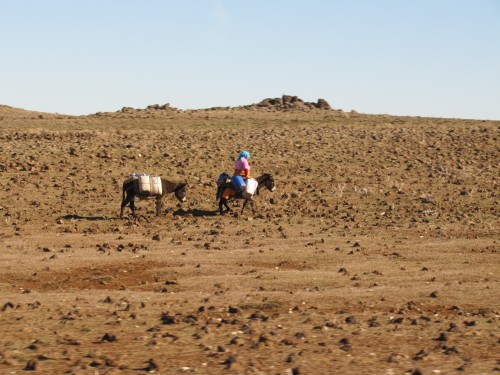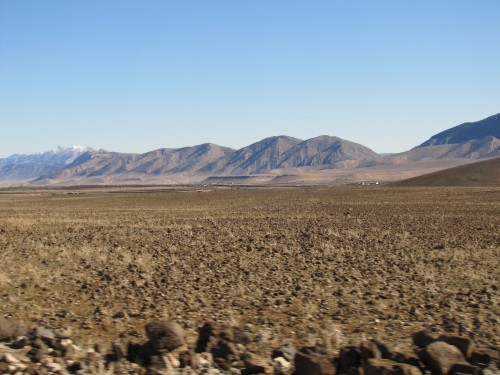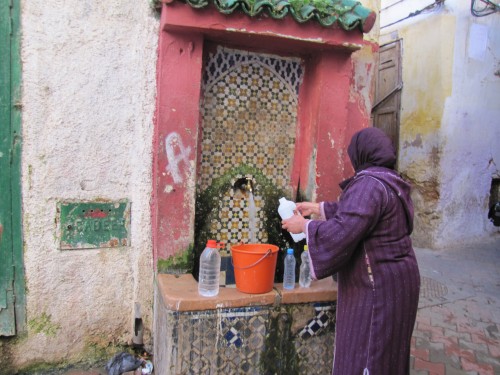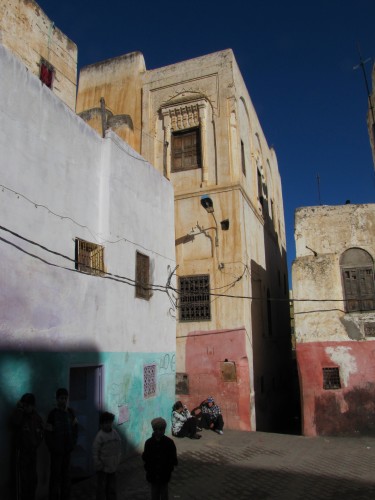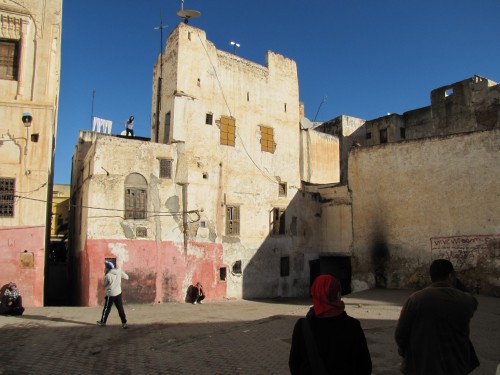Life can be hard in Morocco
While the cities and many of the towns of Morocco are modern and vibrant like we’d expect, rural Morocco in some parts has little in the way of modern facilities and infrastructure. While most of the country has a good supply of water and power, not everyone enjoys these amenities.
As we were travelling along south east of Fes I photographed this women heading off across a desolate landscape to collect water. Her two donkeys are festooned with water bottles for her to collect her daily supply. I have no idea how far she had to ride to get her water, but I did notice public wells or bores at intervals along the highway on which we travelled.
Taking things for granted
When one travels overseas, especially to developing countries like Ethiopia and Morocco, one starts to appreciate how well off we are living in places like Australia. The poignant scene shown in the photo above shows that not all people in Morocco have reticulated water in their homes.
This woman is at the public fountain in the street, filling a series of water containers to take home. We grumble if our water supply is cut off for pipeline repairs or maintenance, even if this is only for an hour or two. Imagine having to go a distance down the street to collect water on a daily basis.
In more rural areas we saw people riding their donkeys great distances in order to reach a reliable source of water.
We take far too many things for granted here in Australia.
Tintinara, upper SE of South Australia
On my recent quick visit to Tintinara in the upper south east of South Australia I had morning tea in the picnic grounds next to the Information Centre and Craft gallery. On the lawns in front of the centre there is an interesting display of metal cutouts of a farmer, his ever alert sheep dogs and a small flock of merino sheep (see photos). This is a fitting tribute to the farming heritage of this area where both sheep and wheat are the strengths of the agricultural pursuits of this region.
The water table is not too far below the surface and windmills like that shown in the photo above are a feature on many farms. Most farms in the region rely on this aquifer, part of the Great Artesian Basin that covers a large part of Australia.
2008 Road Trip: Narrandera, New South Wales
On the second day of our 2008 Road Trip to Sydney we travelled from Hay to Narrandera before stopping for fuel and morning tea. We found a lovely spot in a park near an oval (see photos above and below). It was a much more pleasant day than the day before; the cooler change had come through overnight.
We had a lovely cup of tea with a few home made biscuits we’d brought with us. We quite often also take a thermos with for picnics.
Again, we were disturbed by the excessive use of water. In the middle of the day the evaporation rate is enormous, yet the large sprinklers were pounding out volumes of water on to the nearby oval, as shown in the photo below. Narrandera, like Hay, draws its water from the Murrumbidgee River, a tributary of the Murray River. In South Australia we have been unable to use sprinklers in gardens for several years, and many sporting ovals are dry and dying grass.
I find the lack of restrictions to be environmental vandalism. The lower lakes in South Australia are almost dead, yet here water is being used as if we are not in the biggest drought on record.
Unbelievable.
2008 Road Trip: Murrumbidgee River
On the second day of our 2008 Road Trip to Sydney we left Hay early in the morning because we had a long drive of over 700km to our son’s home in Sydney. Having three drivers – our daughter came with us on this trip – helped ease the burden on driving. Normally we would not attempt such a long distance in one day; we like to stop frequently and look at places.
Before we left Hay in western New South Wales, we went to take a few photos of the Murrumbidgee River which flows through the town. This river is one of the many tributaries of the Murray River which flows through our home town of Murray Bridge.
We were rather disturbed by the liberal use of water in the local gardens. On our walk the previous evening we saw numerous expansive lawns being watered by sprinkler. In South Australia we haven’t been allowed to use sprinklers for several years. I believe that ALL people drawing water from the Murray-Darling river basin should be on the same level of water use. It is not only morally wrong to have different rules for different states – I believe it is environmental vandalism. The lower lakes in South Australia are dying – perhaps are already past the point of being saved, yet here people continue to waste huge volumes of water so that their gardens can look beautiful.
